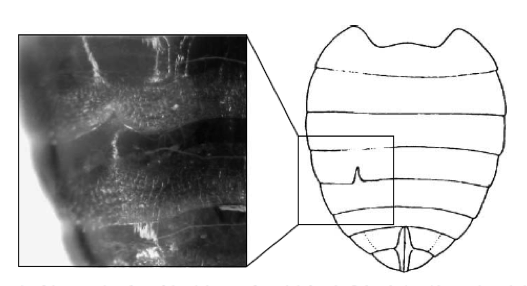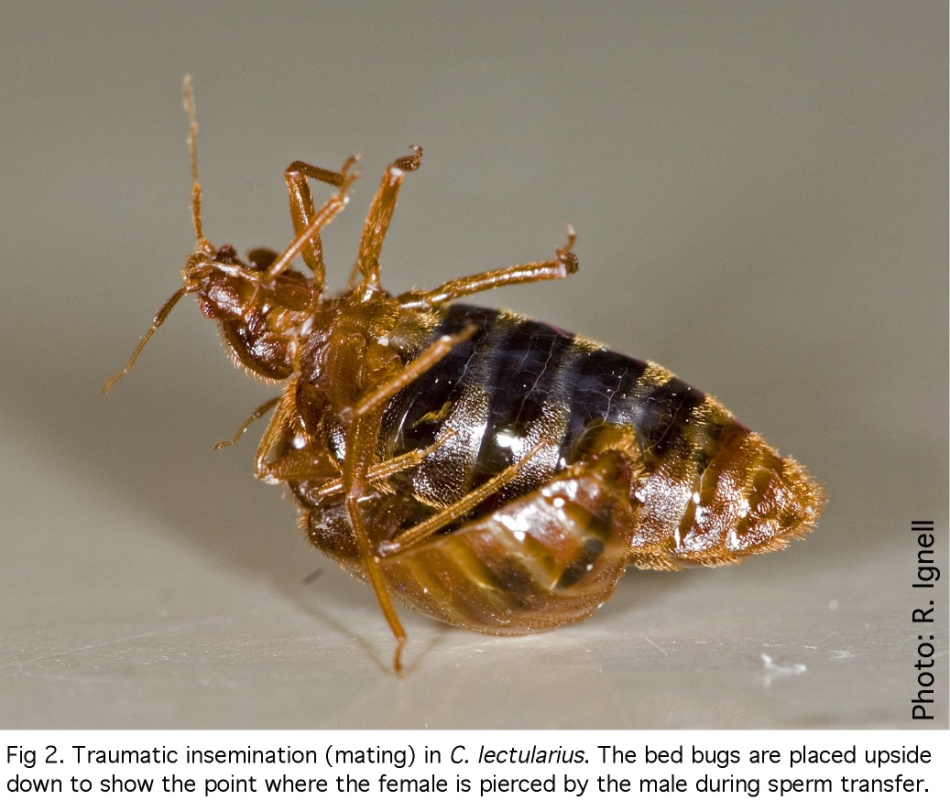| << Chapter < Page | Chapter >> Page > |
These findings demonstrate that the spermalege serves as an organ with immune function. The source of this protection comes from the abundance of spermalege dwelling phagocytic hemocytes, which can kill the pathogens that enter the female’s body during traumatic insemination (Reinhardt et al. 2003; Siva-Jothy 2006).
In C. lectularius , competition among males for mates is thought to have led to the evolution of traumatic insemination by males, followed by the evolution of the spermalege in females, which in turn selected for cooperation by the male with regards to pierce the spermalege, where it would do the least amount of harm. It is not in the interest of the male bed bug to do unnecessary harm to his partner. Given that male fitness also depends on female survival, male bed bugs want the female to live long enough to lay at least some eggs fertilized with his sperm (Reinhardt et al. 2003).



The males of many animals adjust their ejaculate size according to the probable mating status of females because relative sperm numbers can determine paternity outcomes in a system of polyandry , in which one female copulates with multiple partners (Simmons 2001 as cited by Siva-Jothy&Stutt 2003; Parker 2008). Male bed bugs are no exception to this phenomenon. They can detect the mating status of females through chemoreceptors located on their intromittent organs. These receptors allow the male bed bug to sense the presence of ejaculates in the female. If a male bed bug perceives that he is not the first male to mate with a female bed bug, he will copulate for a significantly shorter amount of time than if he were the first male (see [link] ) (Siva-Jothy&Stutt 2003).
As mentioned in the chapter, the spermalege contains phagocytic hemocytes that provide immunity by killing pathogens foreign to the female bed bug. Thus, as a male bed bug ejaculates are introduced to the female’s hemocoel, many components of his semen, including sperm, are under threat of attack from the female’s immune system (Reinhardt et al. 2003; Siva-Jothy 2006). Furthermore, contact with microbes during traumatic insemination can also damage sperm and reduce male reproductive success as well (Otti et al. 2009).
Thus, in C. lectularius , males have been selected to protect their sperm. Research has shown that male med bugs have bacteriolytic activity (lysozyme-like immune activity [LLA]) in their ejaculates.
While LLA is found in the seminal fluid of male bed bugs, its antimicrobial effects may be beneficial to both the male and the female, given that the female is introduced to potentially harmful microbes during sexual transmission (Otti et al. 2009; Reinhardt et al. 2000b).

Notification Switch
Would you like to follow the 'Mockingbird tales: readings in animal behavior' conversation and receive update notifications?